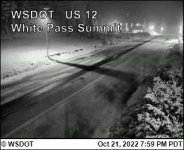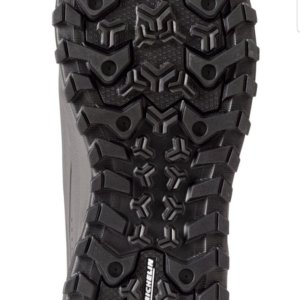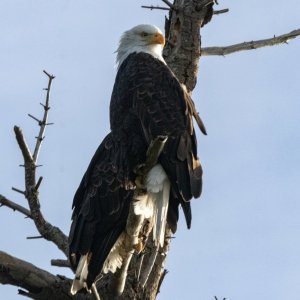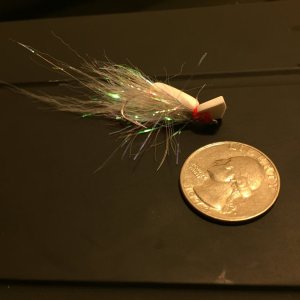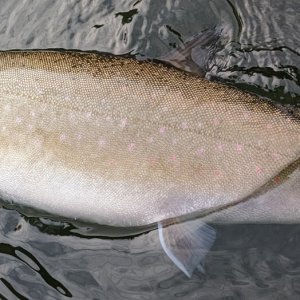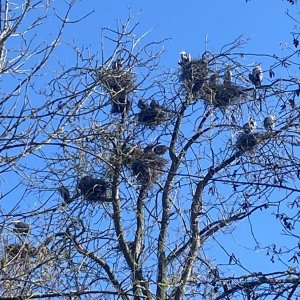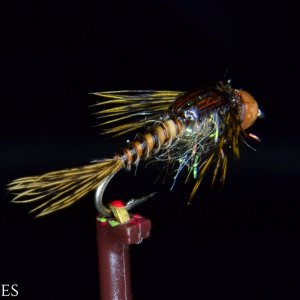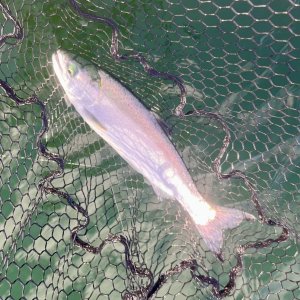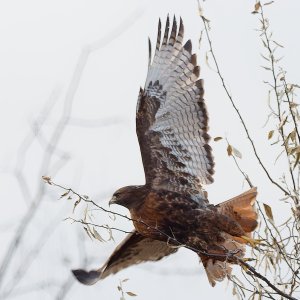There are some good pics in the article, but I had to delete as they are too big for the post. Here is a link to the article if you can get it:

 www.nytimes.com
www.nytimes.com


By Ruth Fremson and Kirk Johnson
Oct. 21, 2022
TROUT LAKE, Wash. — The sun set over the shoulder of Mount Adams at 8:38 p.m., and the temperature around the sacred stone circle fell quickly. People reached for jackets and blankets.
Celebrating the mystery of the summer solstice in this corner of Southwest Washington, deep in the Cascades, means thinking about more than just darkness and light on the year’s longest days. Land, sky and alpine air all seem bound together in the moment.
Kirk Thomas, a druid priest, fixed his gaze toward the volcano’s summit as the evening colors deepened from rose to purple and the ceremony neared its conclusion.
He offered up a blessing.
“May the snows always remain on the mountain,” he said.
Video
Ruth Fremson/The New York Times
Lives, businesses, communities and cultures were founded on the premise of deep snow in this part of the Pacific Northwest.
Native Americans built lives around fishing and the seasonal harvest of camas roots and huckleberries. White settlers later made the area a breadbasket of fruit, wheat and cattle. What water didn’t fall from the sky came from snowmelt and irrigation.
A pattern of moderation in temperature and precipitation extended through the network of river valleys that flow down from Mount Adams and Mount Hood, another volcano that looms some 50 miles south, across the border in Oregon. Both of them are huge, weather-shaping, snow-catcher mountains that are, for the moment, in seismic slumber: Hood, which stands at about 11,250 feet, was last active roughly 150 years ago; Adams, at 12,280 feet, hasn’t erupted in a thousand years.

YAKAMA RESERVATION
But the old predictability has been shattered by climate change. Questions of when the snow comes to the high country, when it melts to feed the rivers that supply irrigation and drinking water, how much of the region’s water falls in rainstorms that dump torrents in hours — all these things have become more variable.
“Those volcanoes are the water towers for the region,” said Anders E. Carlson, the president of the Oregon Glaciers Institute, a research group. “The wine you drink from river valleys that are fed by glacial meltwater, the salmon in your rivers — those are all intimately linked to a system that has been in equilibrium,” he added. “But now we have perturbed that system.”
Snow blanketed a section of forest burned by a wildfire at the base of Mount Adams in March.Credit...Ruth Fremson/The New York Times
Last year, grasshoppers hatched by the millions in a season of record-setting heat and drought. This spring was uncommonly wet and cool, triggering infestations of mold and other plant diseases that have plagued wheat and rye fields. Glaciers on the summits were in retreat last year with exposed patches of brown; this summer, the glistening white was back.
Some residents see days of despair ahead as climate projections point to an unfamiliar future. Others say that the local traditions of tenacity and adaptation will find a way. Around the perimeter of the two volcanoes, people are finding different ways of accommodating the new seasons of uncertainty.
In 1937, President Franklin D. Roosevelt came to the high country above Portland, Ore., to dedicate the Timberline Lodge, built 6,000 feet up Mount Hood by the federal Works Progress Administration as an economic stimulus project during the Great Depression.
Climate Forward There’s an ongoing crisis — and tons of news. Our newsletter keeps you up to date. Get it in your inbox.
Giant wooden beams and stone walls speak of the work that produced the ski lodge, and the places from which the building components were cut or carved: the wet, ancient woods and volcanic lava fields.
Tire chains from the work trucks that clawed up and skidded down the primitive road during the construction were repurposed as fireplace screens. They hang there still before the hearths.
Hood is famous for its prodigious snows. Storms have sometimes buried the lodge to its roofline. Old photos show cars parked on top of snowbanks, with other cars buried in the snow below.
But the ways the seasons play out are changing, said Jeff Kohnstamm, the president and area operator of Timberline. Spring, in particular, has become harder to predict.
He thinks that skiing into July and August — and the economically important arrival of competitive teams that use the mountain for summer practice — will continue into the foreseeable future.
But as the pattern of snowfall becomes harder to predict, business during the other seasons, like mountain biking in summer, will become increasingly important. And Timberline plans to install its first-ever automated snow-making system to augment snowpack.
How we think about the seasons is in some ways a construction, like the lodge, built of patterns and expectations. Roosevelt alluded to that in his radio address from the lodge, years before the widespread awareness of human-caused climate change.
“We as a nation, I think, are coming to realize that summer isn’t the only season for play,” he said.
Shelby Kayser sat straight up in the saddle on her 5-year-old American Paint horse named Lozzy, her eyes focused on the cattle as they bunched and bawled on the ramp into the truck.
The cattle were being trucked to high-country grazing lands, rather than the usual 30-mile cattle drive on horseback from the ranch, because an early-season heat wave in June made the trek too stressful for the animals.
They were late in going, too. Pastures nearer the ranch on the eastern slopes of the Cascades, in Centerville, Wash., had grown tall with grass in the wet spring. That raised the fire danger if the summer heat raged up, so the cattle were deployed as living mowers, eating down the risk.
Ranch life is always a balancing act: how to keep a herd healthy and productive, when and where to commit or pull back. Through five generations on the Kayser place, grit has been the currency.
When Ms. Kayser was in high school, her father, Nate, broke a leg on the first day of fall roundup. “It was a real bad, bad deal — he should have had surgery and pins and I mean rods and all kinds of stuff,” Ms. Kayser, 28, said as the truck lumbered up the mountain. “He told them to put it in a walking boot, and he tied it on the saddle with a gunny sack,” she said. “You won’t find anyone tougher.”
After the cattle were unloaded, Ms. Kayser walked over to examine the bulbous bluegrass, a wild plant growing on the shoulder of the dirt road. It’s high in protein and the cattle love it.
“Twice as tall as I’ve ever seen,” she said, bending over to yank a stalk of the grass. “Last year they were the shortest I can remember.”
Next year?
She shrugged.
There are times in the winter when a patch of blue sky will open up at the center of the Trout Lake Valley, even as Mount Adams remains cloaked in cloud. Storms sometimes swerve around and miss the valley; other times they veer in and hit even harder.
Ancient mysteries of the earth and sky are alive and well, said Mr. Thomas, the druid priest.
He moved to Washington from Arizona in 2008 to open Trout Lake Abbey with a partner, Kozen Sampson. They divided up a former farm with a druid-pagan practice on one side, and a Zen Buddhist practice led by Mr. Sampson on the other.
Mr. Thomas, 70, said he had a spiritual revelation that the White Salmon River, which flows down from Mount Adams at the edge of the abbey, had a goddess, and that her name was Samona.
The story of Samona and the river, and how they illustrate the fragility of the earth, are part of what he talks about to visitors who come for retreats and ceremonies.
“If the river ceases to flow then the goddess ceases to be,” he said.
Pagans believe that the border between the day-to-day world and the deeper spirit world is porous, with liminal passageways through which gods and goddesses — of rivers or weather or other manifestations of nature — may cross. Rituals seek ways to thank those entities on the other side and offer gifts, so that they may give back.
During the solstice ceremony, Mr. Thomas smacked his wooden staff onto the stones, eyes clenched, seeking the borderland.
“Open the gate!” Mr. Thomas chanted. “Open the gate!” Sixteen people, some of whom had driven nine hours to be there, chanted along with him.
The sun slipped down the sky, illuminating what was left of the visible world.
Randy Kiyokawa’s parents met and fell in love during World War II in an internment camp in Tulelake, Calif., where thousands of Japanese Americans were sent in 1942.
A chance meeting helped shape the family’s outlook, he said — that even in calamity, hope and possibility persist.
“You make the best of it,” he said.
Mr. Kiyokawa, 61, is a third-generation fruit-grower in the Hood River Valley, where the forested slopes below Mount Hood are tempered by air circulating up from the Columbia River. He walked down a row of trees in his orchard, chatting casually with his workers.
“Cómo estás?” he said again and again.
He paused to touch a leaf in what almost looked like a caress.
Far more than growers of things like wheat or corn, who live by the monthly calendar, orchardists must peer years into the future.
Pears, the biggest crop at Kiyokawa Family Orchards, can take 12 years to reach full production. Every decision shapes a world you can’t see yet. “Pears for your heirs,” sums it up, Mr. Kiyokawa said.
Image
Some short-term seasonal patterns have shifted. Elk herds now roam far from their old grazing lands as habitats have changed, and they can be hugely destructive to trees and their bark.
Hail storms have become more severe and frequent. Nets can protect the most valuable crops, like Honeycrisp apples, but they don’t make economic sense for the whole orchard, Mr. Kiyokawa said.
“The question every year now is, ‘How bad is the hail going to be?’”
Salmon are at the center of Yakama Nation culture, going back to the people who arrived thousands of years ago to the area around Mount Adams.
“The salmon stood up first to say, ‘I will provide,’” said Kate Valdez, the tribe’s historic preservation officer and a member of the Klickitat Band. That’s why, in any tribal feast, salmon is always given a place of honor at the table.
The tribe’s commitment had results and consequences.
“We’re going to have fish back in this river because of them, largely,” said G. Thomas Tebb, the director of the Office of the Columbia River at the Washington State Department of Ecology. “Even when the state Fish and Wildlife Department gave up on salmon, the Yakamas never did, and thank God they didn’t.”
A focus on salmon has in turn meant focusing on the cold water that salmon need in the streams and rivers that start on Mount Adams, at the reservation’s western edge. The tribe has become a pioneer in thinking about new methods of water storage, creating wetlands, staving off erosion.
“To see that mountain every day is a comfort, a place of peace and a place that can speak to you if you live in the area long enough to understand,” said Ms. Valdez, 46, who lives on the drier, eastern slopes of the mountain that are home to the tribe’s present-day reservation.
She sees a collision course looming between climate change, with glaciers in retreat on the mountain, and population growth downstream. More households will come, with second homes replacing farms, even as water supplies tighten.
So, as always, she said, you keep your eye on what is important and move forward.

Life Was Built Around Snow. What Happens When It Vanishes?
The melting of the snowpack in the high Cascades has long been a predictable source of sustenance in the Pacific Northwest. But the old patterns are changing.
Life Was Built Around Snow. What Happens When It Vanishes?
The melting of the snowpack in the high Cascades has long been a predictable source of sustenance in the Pacific Northwest. But the old patterns are changing.

By Ruth Fremson and Kirk Johnson
Oct. 21, 2022
TROUT LAKE, Wash. — The sun set over the shoulder of Mount Adams at 8:38 p.m., and the temperature around the sacred stone circle fell quickly. People reached for jackets and blankets.
Celebrating the mystery of the summer solstice in this corner of Southwest Washington, deep in the Cascades, means thinking about more than just darkness and light on the year’s longest days. Land, sky and alpine air all seem bound together in the moment.
Kirk Thomas, a druid priest, fixed his gaze toward the volcano’s summit as the evening colors deepened from rose to purple and the ceremony neared its conclusion.
He offered up a blessing.
“May the snows always remain on the mountain,” he said.
Video
Ruth Fremson/The New York Times
Lives, businesses, communities and cultures were founded on the premise of deep snow in this part of the Pacific Northwest.
Native Americans built lives around fishing and the seasonal harvest of camas roots and huckleberries. White settlers later made the area a breadbasket of fruit, wheat and cattle. What water didn’t fall from the sky came from snowmelt and irrigation.
A pattern of moderation in temperature and precipitation extended through the network of river valleys that flow down from Mount Adams and Mount Hood, another volcano that looms some 50 miles south, across the border in Oregon. Both of them are huge, weather-shaping, snow-catcher mountains that are, for the moment, in seismic slumber: Hood, which stands at about 11,250 feet, was last active roughly 150 years ago; Adams, at 12,280 feet, hasn’t erupted in a thousand years.

YAKAMA RESERVATION
But the old predictability has been shattered by climate change. Questions of when the snow comes to the high country, when it melts to feed the rivers that supply irrigation and drinking water, how much of the region’s water falls in rainstorms that dump torrents in hours — all these things have become more variable.
“Those volcanoes are the water towers for the region,” said Anders E. Carlson, the president of the Oregon Glaciers Institute, a research group. “The wine you drink from river valleys that are fed by glacial meltwater, the salmon in your rivers — those are all intimately linked to a system that has been in equilibrium,” he added. “But now we have perturbed that system.”
Snow blanketed a section of forest burned by a wildfire at the base of Mount Adams in March.Credit...Ruth Fremson/The New York Times
Last year, grasshoppers hatched by the millions in a season of record-setting heat and drought. This spring was uncommonly wet and cool, triggering infestations of mold and other plant diseases that have plagued wheat and rye fields. Glaciers on the summits were in retreat last year with exposed patches of brown; this summer, the glistening white was back.
Some residents see days of despair ahead as climate projections point to an unfamiliar future. Others say that the local traditions of tenacity and adaptation will find a way. Around the perimeter of the two volcanoes, people are finding different ways of accommodating the new seasons of uncertainty.
In 1937, President Franklin D. Roosevelt came to the high country above Portland, Ore., to dedicate the Timberline Lodge, built 6,000 feet up Mount Hood by the federal Works Progress Administration as an economic stimulus project during the Great Depression.
Climate Forward There’s an ongoing crisis — and tons of news. Our newsletter keeps you up to date. Get it in your inbox.
Giant wooden beams and stone walls speak of the work that produced the ski lodge, and the places from which the building components were cut or carved: the wet, ancient woods and volcanic lava fields.
Tire chains from the work trucks that clawed up and skidded down the primitive road during the construction were repurposed as fireplace screens. They hang there still before the hearths.
Hood is famous for its prodigious snows. Storms have sometimes buried the lodge to its roofline. Old photos show cars parked on top of snowbanks, with other cars buried in the snow below.
But the ways the seasons play out are changing, said Jeff Kohnstamm, the president and area operator of Timberline. Spring, in particular, has become harder to predict.
He thinks that skiing into July and August — and the economically important arrival of competitive teams that use the mountain for summer practice — will continue into the foreseeable future.
But as the pattern of snowfall becomes harder to predict, business during the other seasons, like mountain biking in summer, will become increasingly important. And Timberline plans to install its first-ever automated snow-making system to augment snowpack.
How we think about the seasons is in some ways a construction, like the lodge, built of patterns and expectations. Roosevelt alluded to that in his radio address from the lodge, years before the widespread awareness of human-caused climate change.
“We as a nation, I think, are coming to realize that summer isn’t the only season for play,” he said.
Shelby Kayser sat straight up in the saddle on her 5-year-old American Paint horse named Lozzy, her eyes focused on the cattle as they bunched and bawled on the ramp into the truck.
The cattle were being trucked to high-country grazing lands, rather than the usual 30-mile cattle drive on horseback from the ranch, because an early-season heat wave in June made the trek too stressful for the animals.
They were late in going, too. Pastures nearer the ranch on the eastern slopes of the Cascades, in Centerville, Wash., had grown tall with grass in the wet spring. That raised the fire danger if the summer heat raged up, so the cattle were deployed as living mowers, eating down the risk.
Ranch life is always a balancing act: how to keep a herd healthy and productive, when and where to commit or pull back. Through five generations on the Kayser place, grit has been the currency.
When Ms. Kayser was in high school, her father, Nate, broke a leg on the first day of fall roundup. “It was a real bad, bad deal — he should have had surgery and pins and I mean rods and all kinds of stuff,” Ms. Kayser, 28, said as the truck lumbered up the mountain. “He told them to put it in a walking boot, and he tied it on the saddle with a gunny sack,” she said. “You won’t find anyone tougher.”
After the cattle were unloaded, Ms. Kayser walked over to examine the bulbous bluegrass, a wild plant growing on the shoulder of the dirt road. It’s high in protein and the cattle love it.
“Twice as tall as I’ve ever seen,” she said, bending over to yank a stalk of the grass. “Last year they were the shortest I can remember.”
Next year?
She shrugged.
There are times in the winter when a patch of blue sky will open up at the center of the Trout Lake Valley, even as Mount Adams remains cloaked in cloud. Storms sometimes swerve around and miss the valley; other times they veer in and hit even harder.
Ancient mysteries of the earth and sky are alive and well, said Mr. Thomas, the druid priest.
He moved to Washington from Arizona in 2008 to open Trout Lake Abbey with a partner, Kozen Sampson. They divided up a former farm with a druid-pagan practice on one side, and a Zen Buddhist practice led by Mr. Sampson on the other.
Mr. Thomas, 70, said he had a spiritual revelation that the White Salmon River, which flows down from Mount Adams at the edge of the abbey, had a goddess, and that her name was Samona.
The story of Samona and the river, and how they illustrate the fragility of the earth, are part of what he talks about to visitors who come for retreats and ceremonies.
“If the river ceases to flow then the goddess ceases to be,” he said.
Pagans believe that the border between the day-to-day world and the deeper spirit world is porous, with liminal passageways through which gods and goddesses — of rivers or weather or other manifestations of nature — may cross. Rituals seek ways to thank those entities on the other side and offer gifts, so that they may give back.
During the solstice ceremony, Mr. Thomas smacked his wooden staff onto the stones, eyes clenched, seeking the borderland.
“Open the gate!” Mr. Thomas chanted. “Open the gate!” Sixteen people, some of whom had driven nine hours to be there, chanted along with him.
The sun slipped down the sky, illuminating what was left of the visible world.
Randy Kiyokawa’s parents met and fell in love during World War II in an internment camp in Tulelake, Calif., where thousands of Japanese Americans were sent in 1942.
A chance meeting helped shape the family’s outlook, he said — that even in calamity, hope and possibility persist.
“You make the best of it,” he said.
Mr. Kiyokawa, 61, is a third-generation fruit-grower in the Hood River Valley, where the forested slopes below Mount Hood are tempered by air circulating up from the Columbia River. He walked down a row of trees in his orchard, chatting casually with his workers.
“Cómo estás?” he said again and again.
He paused to touch a leaf in what almost looked like a caress.
Far more than growers of things like wheat or corn, who live by the monthly calendar, orchardists must peer years into the future.
Pears, the biggest crop at Kiyokawa Family Orchards, can take 12 years to reach full production. Every decision shapes a world you can’t see yet. “Pears for your heirs,” sums it up, Mr. Kiyokawa said.
Image
Some short-term seasonal patterns have shifted. Elk herds now roam far from their old grazing lands as habitats have changed, and they can be hugely destructive to trees and their bark.
Hail storms have become more severe and frequent. Nets can protect the most valuable crops, like Honeycrisp apples, but they don’t make economic sense for the whole orchard, Mr. Kiyokawa said.
“The question every year now is, ‘How bad is the hail going to be?’”
Salmon are at the center of Yakama Nation culture, going back to the people who arrived thousands of years ago to the area around Mount Adams.
“The salmon stood up first to say, ‘I will provide,’” said Kate Valdez, the tribe’s historic preservation officer and a member of the Klickitat Band. That’s why, in any tribal feast, salmon is always given a place of honor at the table.
The tribe’s commitment had results and consequences.
“We’re going to have fish back in this river because of them, largely,” said G. Thomas Tebb, the director of the Office of the Columbia River at the Washington State Department of Ecology. “Even when the state Fish and Wildlife Department gave up on salmon, the Yakamas never did, and thank God they didn’t.”
A focus on salmon has in turn meant focusing on the cold water that salmon need in the streams and rivers that start on Mount Adams, at the reservation’s western edge. The tribe has become a pioneer in thinking about new methods of water storage, creating wetlands, staving off erosion.
“To see that mountain every day is a comfort, a place of peace and a place that can speak to you if you live in the area long enough to understand,” said Ms. Valdez, 46, who lives on the drier, eastern slopes of the mountain that are home to the tribe’s present-day reservation.
She sees a collision course looming between climate change, with glaciers in retreat on the mountain, and population growth downstream. More households will come, with second homes replacing farms, even as water supplies tighten.
So, as always, she said, you keep your eye on what is important and move forward.

